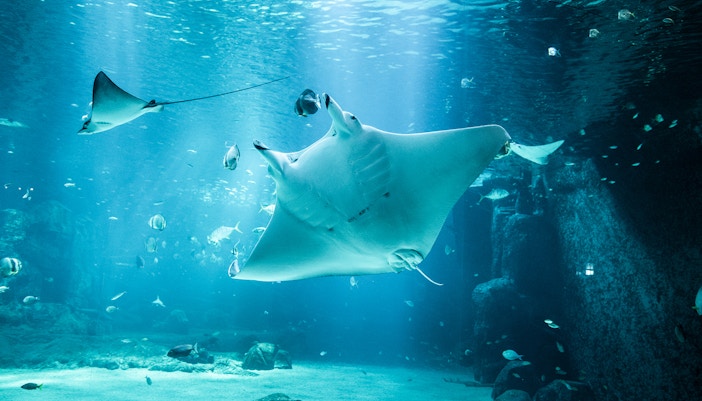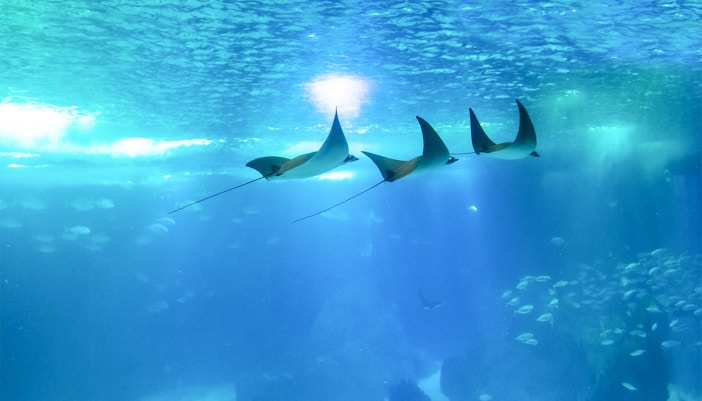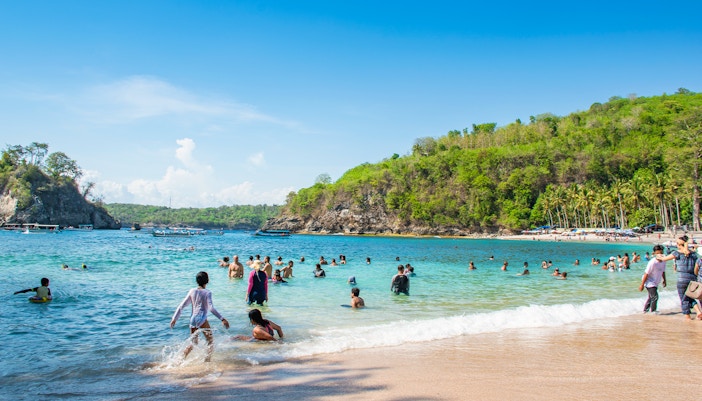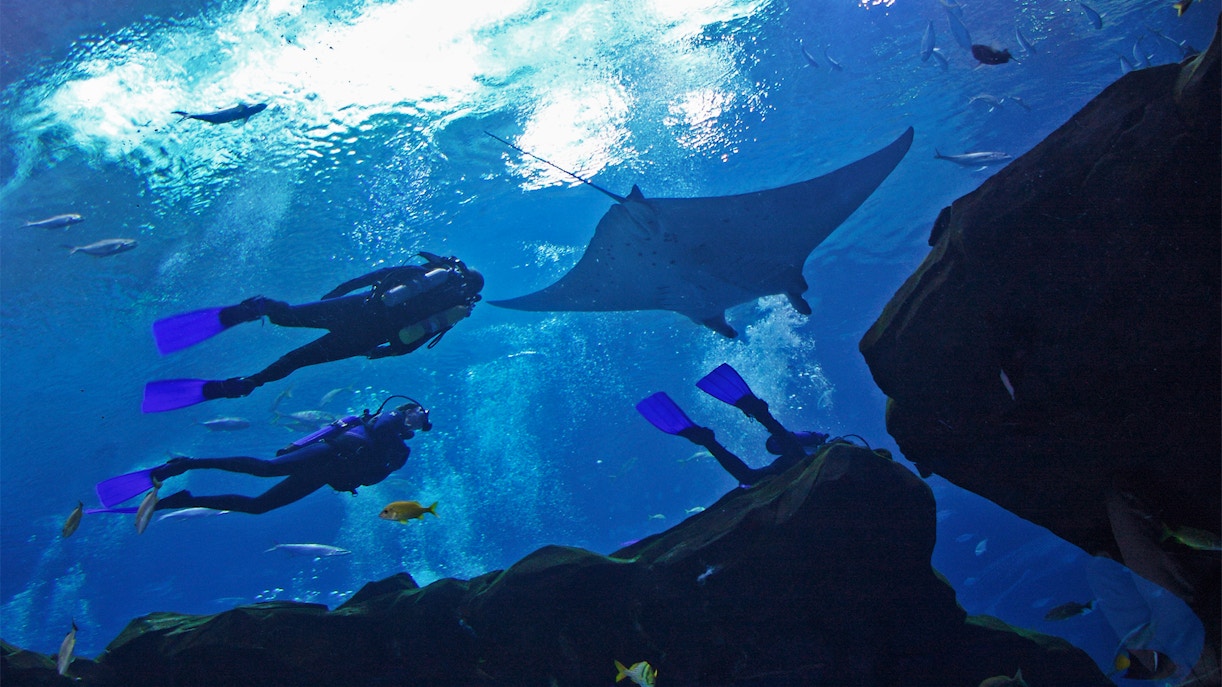- Why it’s special: This is a renowned cleaning station, where reef manta rays gather to get their gills and bodies cleaned by smaller fish.
- Best time: Mantas can be seen year-round, with sightings almost daily. Peak season is March–June, but locals report sightings in every season.
- Conditions & access: Strong southern swells can affect accessibility, so trips depend on the weather.
Top Spots for Manta Ray Encounters

Manta Point / Batu Lumbung

Manta Bay
- Why visit: Open bay with plankton-rich currents. Manta rays feed near the surface—excellent for snorkel trips.
- How to go: Requires a boat tour (from Bali or Nusa Penida). Tours often combine Manta Bay with other snorkel or dive spots.
- Best time to visit: Mornings offer calm water, and lifejackets are recommended if you're not confident in open seas.

Crystal Bay
- Why go: Though primarily known for Mola molas, it's also included in many manta tours. Swim here for calmer water and beautiful reefs.
- Access: Easy shore access; you can visit independently without a boat.

